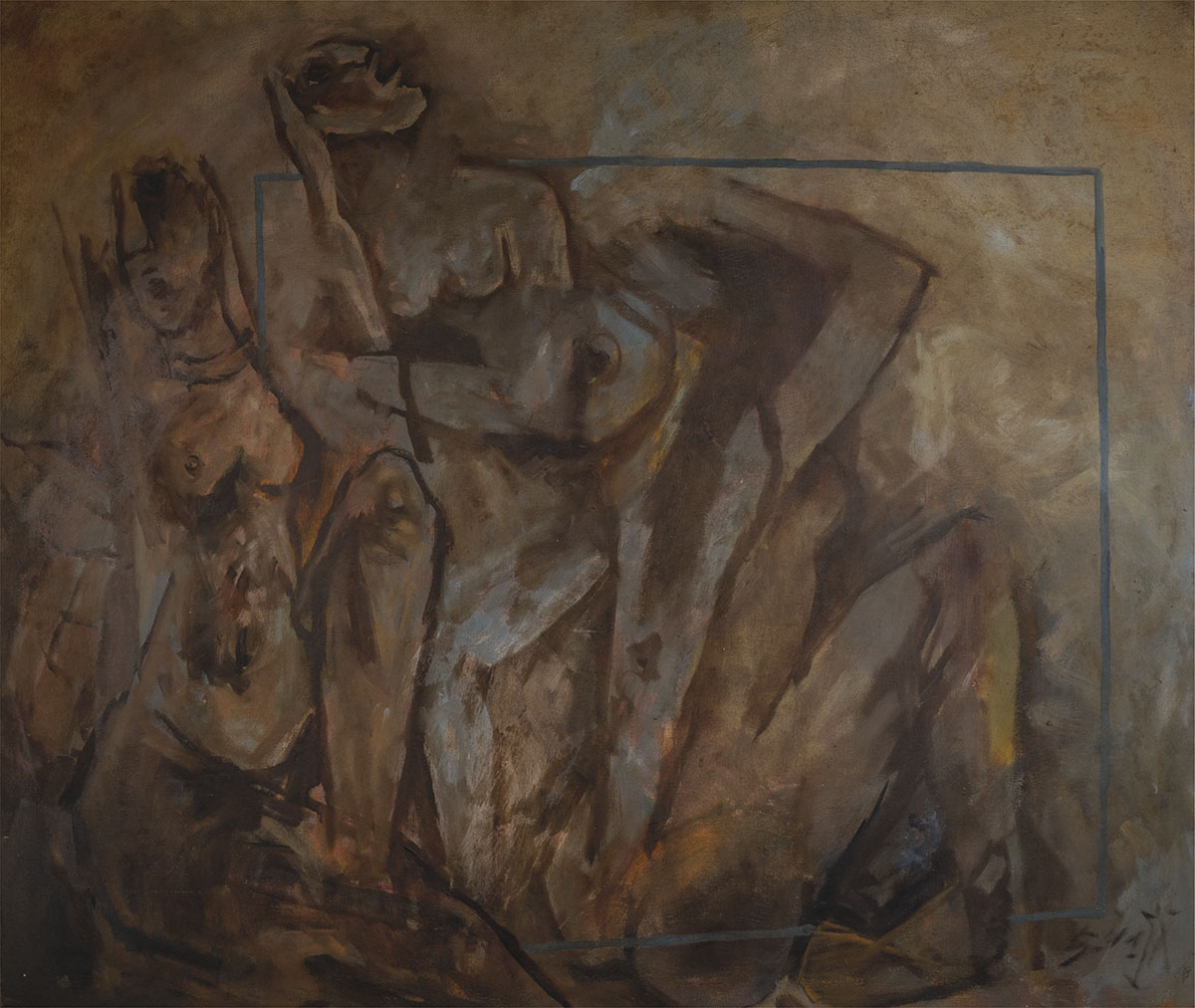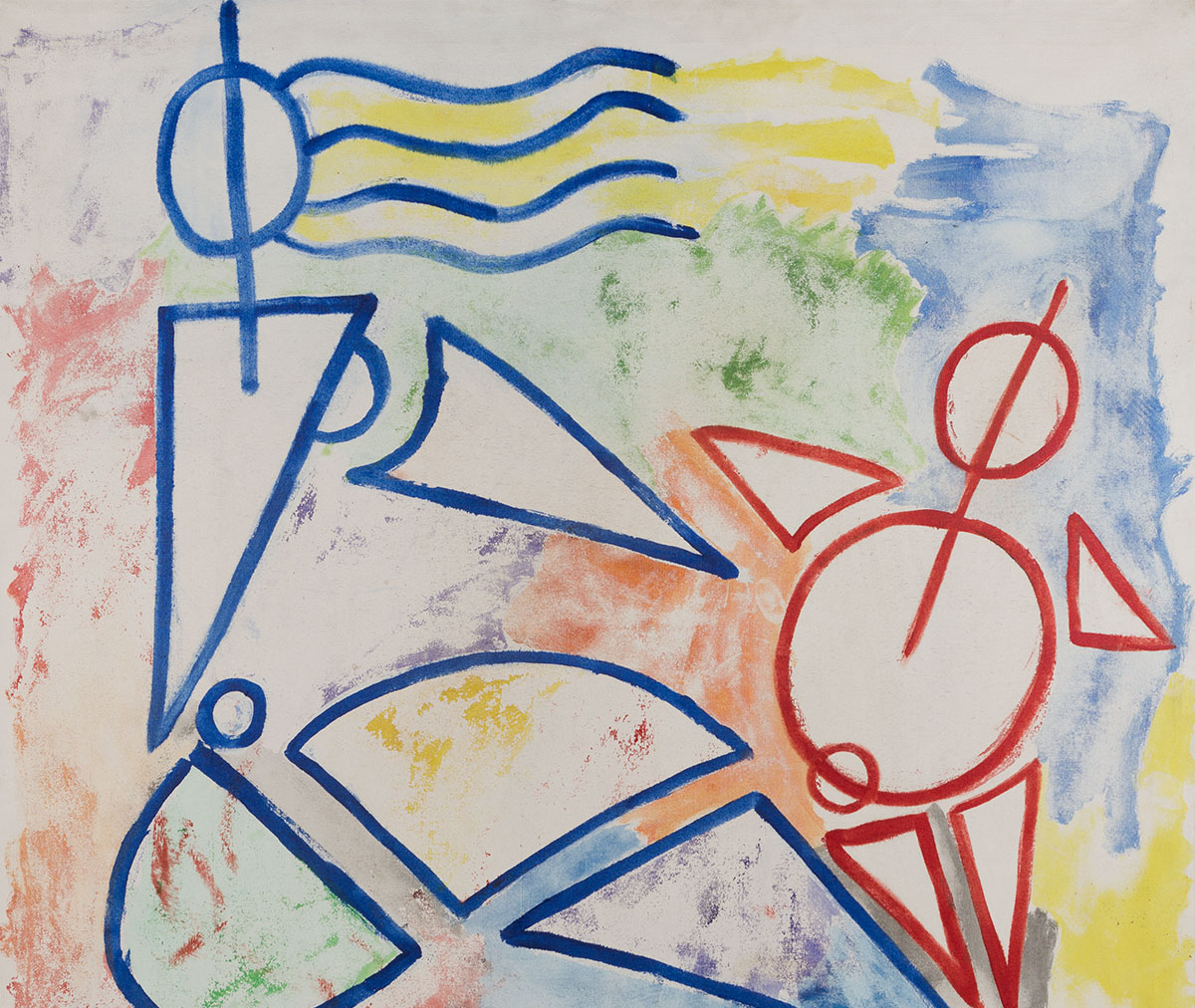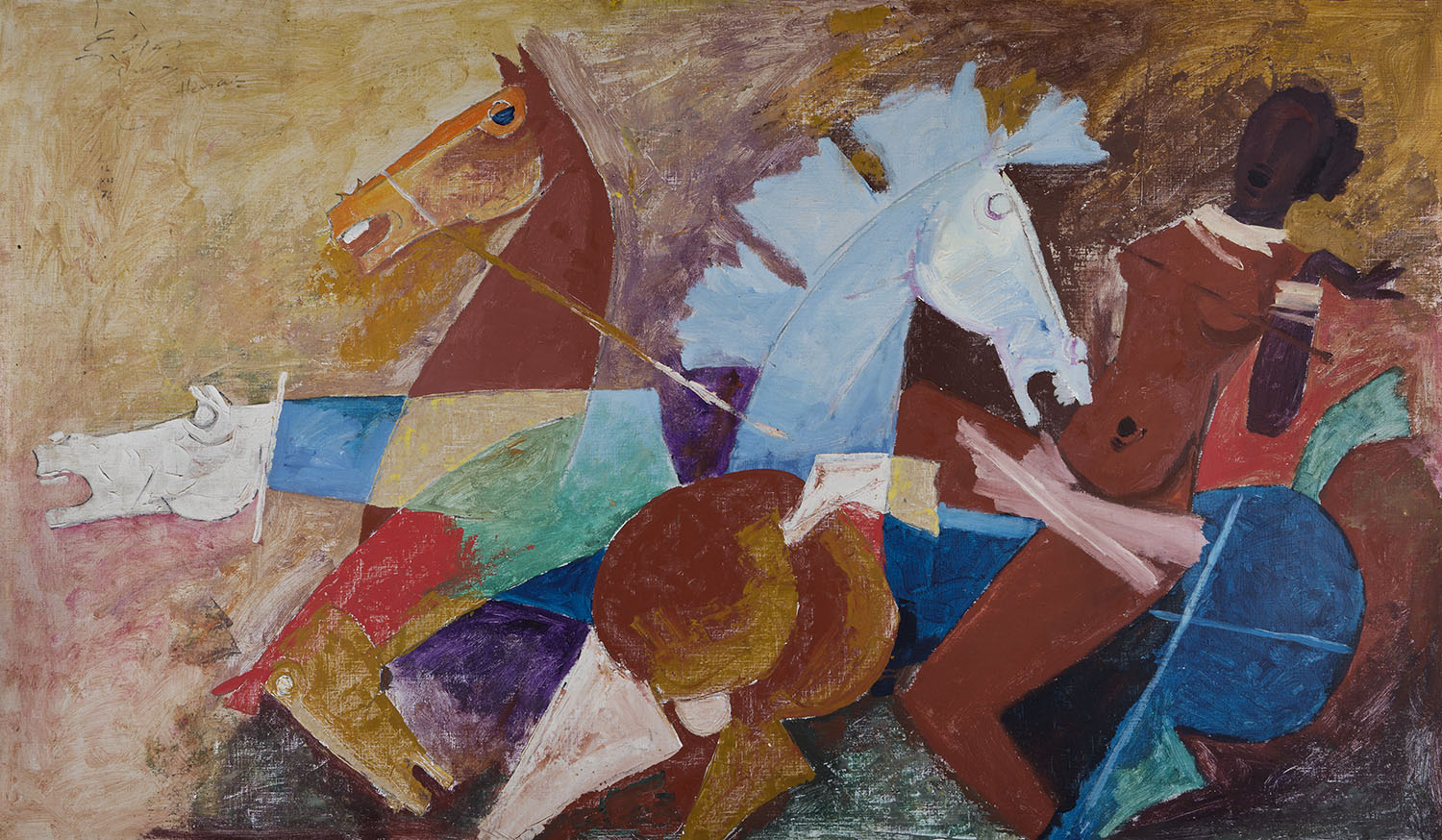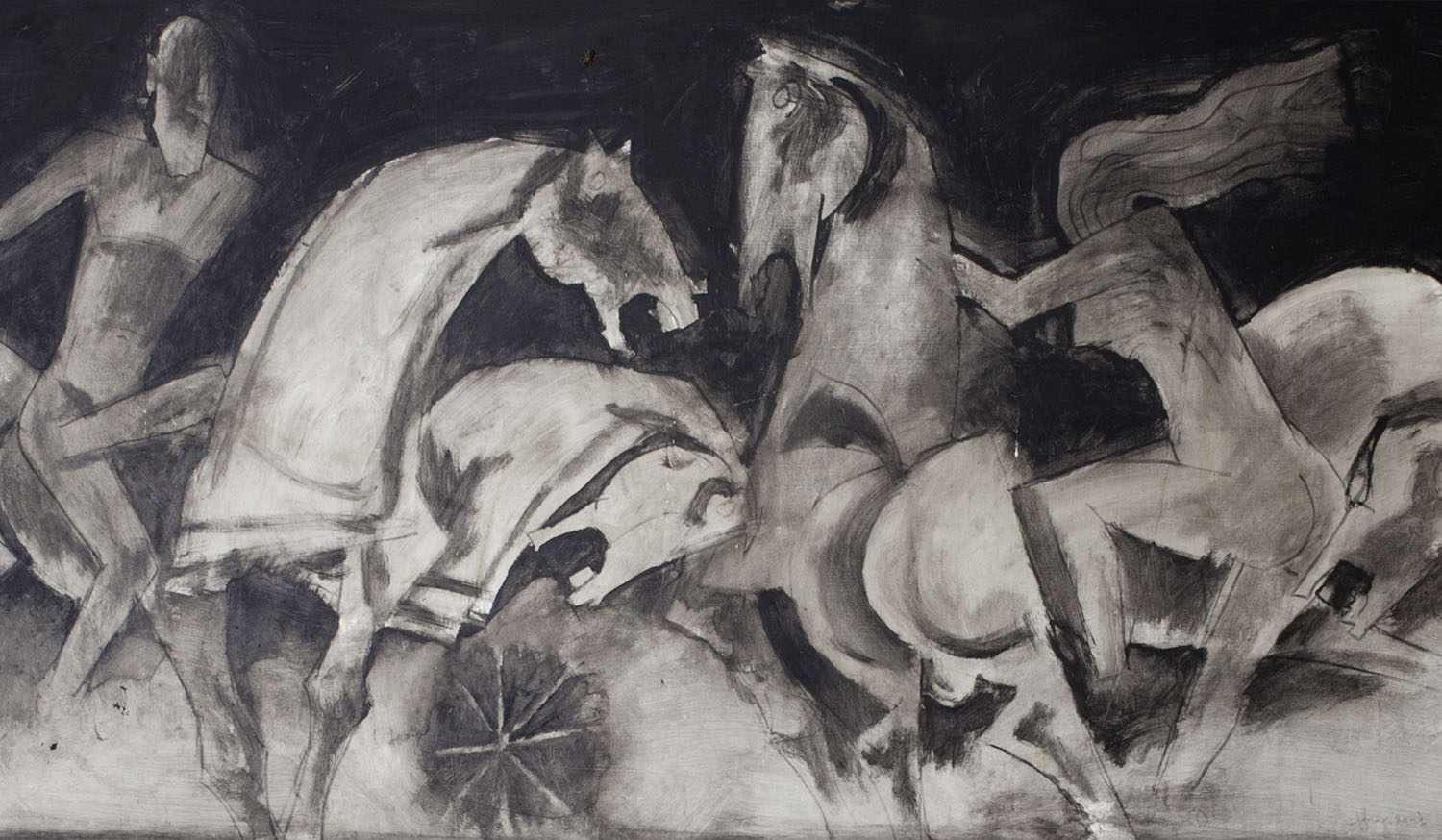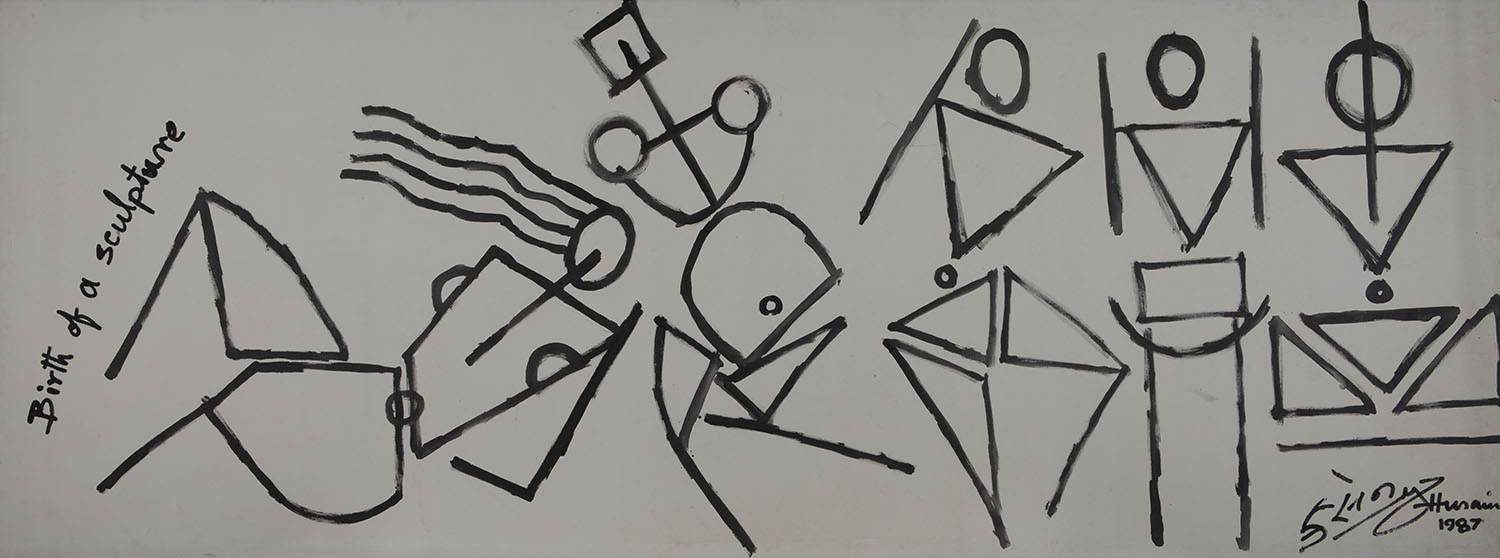Encyclopedia of Art > Articles
MF Husain
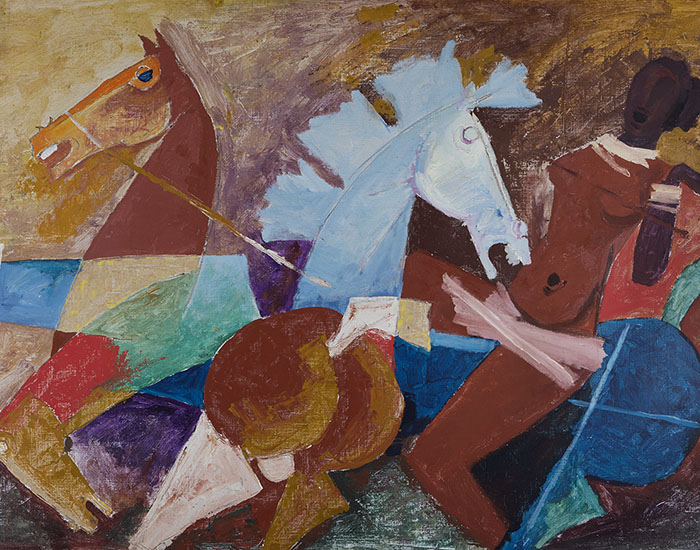
Artist and poet Maqbool Fida Husain is known for paintings characterised by a bold colour palette and well-defined brushstrokes that depict subjects from popular culture, religion and mythology. Husain’s style was heavily influenced by his experience with calligraphy and painting billboards for Hindi cinema. His repertoire also extended to filmmaking and toy design, where his painting style is often evident.
Born in Pandharpur, Maharashtra, Husain was sent to his maternal grandfather’s madrassa in Siddhpur, Gujarat, to obtain religious instruction. It was here that Husain was exposed to Urdu language and literature and consequently developed his calligraphic skills, practising letter-writing in the Kufic script and designing tughra, or calligraphic monograms, on paper with ink, glass and enamel colours. Later, growing up in Indore, Husain participated in the city’s spontaneous evening mushairas, or poetry recital contests.
In 1932, Husain began attending evening classes to study painting at the Government Institute of Fine Art, Indore, and made landscapes of the surrounding country in a style heavily influenced by the academic Naturalism taught in the college. In 1934, Husain enrolled at the Sir JJ School of Art, Mumbai, to study painting, although financial constraints forced him to return to Pandharpur. In 1937, Husain returned to Mumbai, where he supported himself by painting hoardings and billboards for Hindi films. He also worked with a company that designed children’s furniture, while simultaneously painting regularly, visiting exhibitions and occasionally participating in Mumbai’s art shows. In 1947, Husain won an award in the annual art show of the Bombay Art Society, and met artists including FN Souza, SK Bakre and SH Raza. Soon after, he became one of the founding members of the Bombay Progressive Artists’ Group (PAG).
His work, while secular in spirit, uses symbolism and iconography drawn from religious and mythological sources, particularly the Mahabharata and Ramayana. Husain’s paintings often also featured historical figures such as MK Gandhi and Mother Teresa. Husain’s years of painting billboards for Hindi films had familiarised him with creating large-scale figures quickly and decisively, contributing to his characteristic style. In his oil-on-canvas Peasant Couple (1950), he depicts a rural setting with the figure of a man and a woman moving across the canvas, where the figures are painted in well-defined strokes and vibrant colours.
Utilising oil, acrylic and watercolours, along with offset printing and serigraphy printmaking, Husain created landscapes, portraits and drawings, adapting European Modernist techniques to Indian themes. He was largely concerned with the socio-economic experiences of the various classes, portraying farmers, labourers and rural landscapes, as well as urban agglomerations and metropolitan environments. For instance, his ink-on-paper work Between the Spider and the Lamp (1956) attempted to portray the everyday struggles of people Husain encountered on Grant Road, Mumbai, including sex workers, touts and others, rendered in bold, Expressionist strokes and detailed, calligraphic lines.
In 2005, Husain painted The Last Supper, a version of the mythologised last supper of Jesus Christ. The painting shows a seated Christ with an open book before him; on his left stands a woman in white, while on his right stands a bearded old man and a figure interpreted as an African woman. The table is held up by an angel and the devil on either side, and an empty bowl sits at the centre. The painting sold for USD 2 million in 2005, making it the highest priced Indian painting sold at auction at the time.
He also wrote and directed films, notably Through the Eyes of a Painter — a film notable for using iconographic elements from Husain’s paintings, and for which he received the Golden Bear short film award at the Berlin International Film Festival (1967) and the Indian National Award for Best Experimental Film (1968). Other films included Gaja Gamini (2000) and Meenaxi: A Tale of Three Cities (2004).
Husain held his first solo exhibition in Mumbai in 1950, followed by exhibitions at Kunst Kabinet, Frankfurt (1960); Jehangir Art Gallery, Mumbai (1969); the Sao Paulo Biennale (1971); and Kings Road Galleries, London (2009). He received the National Award from the Lalit Kala Akademi, New Delhi (1955), the Padma Shri (1966), the Padma Bhushan (1973) and the Padma Vibhushan (1991) for his contributions to art. His works are part of the collections of the National Gallery of Modern Art, New Delhi; Los Angeles County Museum of Art; and the National Museum of Islamic Art, Doha.
In 1996, Husain was accused by right-wing Hindu groups of hurting religious sentiments by depicting the Hindu goddesses Saraswati, Durga and Lakshmi in the nude. These paintings — some of which were made much earlier — as well as his 2006 depiction of Mother India in the nude, led to various lawsuits being filed against him. In 2006, he was formally charged on these counts and subsequently lived between London and Doha in self-imposed exile.
Husain died in London in 2011, at the age of ninety-five.
First Published: April 21, 2022
Last Updated: July 26, 2023

